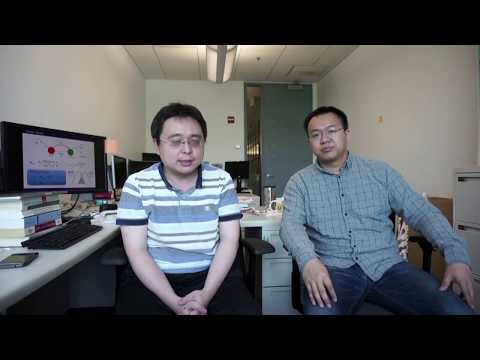Watch an overview of resonance energy transfer between molecules in the presence of plasmonic structures and derive an explicit Förster-type expression for the rate of plasmon-coupled resonance energy transfer (PC-RET). Plasmonics is a multidisciplinary field that examines the interaction between electromagnetic fields and conduction electrons in metals and semiconductors. Resonance energy transfer (RET), including radiative […]

Watch an overview of resonance energy transfer between molecules in the presence of plasmonic structures and derive an explicit Förster-type expression for the rate of plasmon-coupled resonance energy transfer (PC-RET). Plasmonics is a multidisciplinary field that examines the interaction between electromagnetic fields and conduction electrons in metals and semiconductors. Resonance energy transfer (RET), including radiative and radiativeless mechanisms, is a ubiquitous photophysical process. RET has attracted considerable attention due to its promising applications in photosynthesis (e.g., light harvesting), photovoltaics (e.g., exciton diffusion in organic or inorganic photovoltaic cells, energy conversion), biomolecular structure and dynamics, single-molecule experiments, biosensing, and chemical sensing. PC-RET is an exciting and promising field. Several studies have shown the influence of photonic mode density and plasmon effects on resonance energy transfer and explored the potential applications of PC-RET in plasmonic nanowaveguides, molecular imaging, nanospectroscopy, and solar energy conversion. This opens a promising direction for exploring exciton transport in plasmonic nanostructures, with possible applications in spectroscopy, photonics, biosensing, and energy devices.
This video, based on a Perspective article from The Journal of Physical Chemistry Letters, begins with an overview of resonance energy transfer and Förster theory. Then it introduces a new method to determine RET rate between molecules in the presence of plasmonic structure. The proposed theory is general for energy transfer in the presence of materials with any space-dependent, frequency-dependent, or complex dielectric functions. Furthermore, the theory allows for the development of the concept of a generalized spectral overlap (GSO) (the integral of the molecular absorption coefficient, normalized emission spectrum, and the plasmon coupling factor) for understanding the wavelength dependence of PC-RET and to estimate the rate of PC-RET. An example simulation of the GSO shows that plamonic effects from a nanoparticle are well captured with tis new method.

